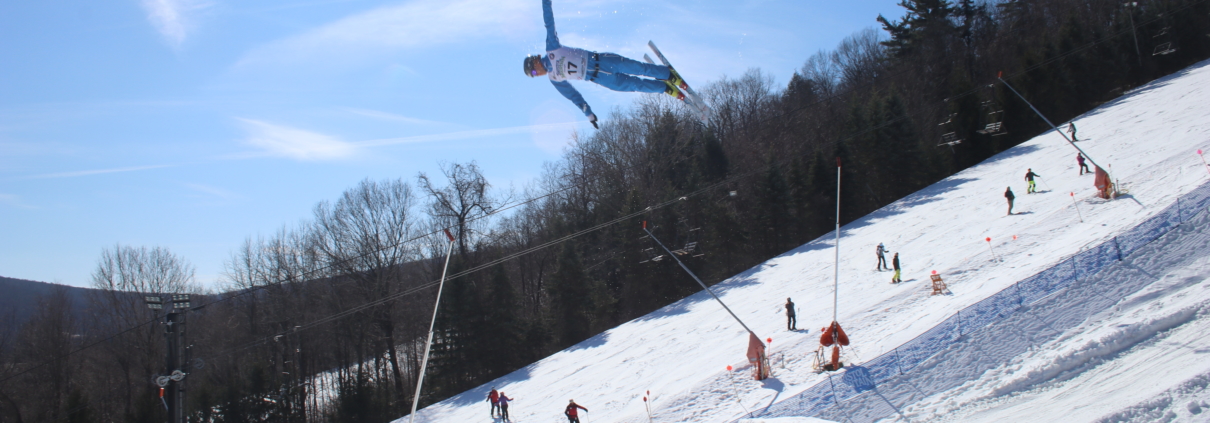Information on Freestyle Aerials
Aerials is a sub-discipline of freestyle skiing where athletes perform flips and twists in the air. Athletes ski down a steep slope towards a kicker that propels them into the air. In aerial skiing competitors are judged and awarded a score based on their runs. The runs are judged on three separate factors, jump takeoff, jump form, and the landing. Jump takeoff accounts for 25% of the scores, jump form accounts for 50%, and landing accounts for 25%. The total score is then calculated with a degree of difficulty factored in.
Freestyle Aerial Skiing Olympic Evolution
Freestyle aerials was first contested as a demonstration sport at the 1988 Olympic Games in Calgary and gained medal status at the 1994 Olympic Games in Lillehammer. Since freestyle aerials first debuted as a medal event in the Olympics the United States has received 1 Gold Medal (Eric Bergoust, 1998 Nagano) and 2 Silver Medals (Joe Pack, 2002 Salt Lake City & Jeret Peterson, 2010 Vancouver) for men and 1 Gold Medal (Nikki Stone, 1998 Nagano) for women.
How do they do it?
Before any maneuver is attempted on snow, athletes must first be qualified for that jump on the water. Athletes typically do 23-35 jumps a day at the pool and it takes hundreds of jumps on water before completing their first inverted flip. The standard that is used for training requires an athlete to train a minimum of 200 jumps before they are considered to be water qualified for that jump. Water qualification involves doing five jumps perfectly into the water at varying speeds After successful water qualification then the jump can be trained on snow.
Aerialists will typically qualify back tuck, lay, full (back layout with a full twist) and double full before they move on to the double. Aerialists will typically qualify back lay tuck, lay lay, lay full, and full full before they move on to the triple. Each jump is individually qualified and many thousands of water ramp jumps are trained before an athlete even attempts their first double on snow.
Athletes can control their flip rotations with their arms and bodies once in the air, and the coach helps them by making verbal calls during the jump. If not enough height or flip speed is achieved the coach will yell a pull call and the athlete will drop their arms to their side or even pike or tuck to speed up the rotation. If the athlete has too much air or sets too much flip the coach will yell a stretch call and the athlete will make their body as long as possible by stretching their arms over their head to slow the rotation.
FIS Aerial Jump Code & Degree of Difficulty Chart can be found here.
Bios of the athletes competing in the 2020 Freestyle Aerials U.S. National Championships can be found here.
Mikey’s Jump Information
Mikey’s Jump in the HighPoint Terrain Park at Bristol Mountain provides spectators the unique opportunity to view this awe-inspiring sport. Most world class freestyle aerial jump sites are in remote locations away from ski areas and spectators, providing limited opportunities for viewing and interaction with the athletes. At Bristol Mountain spectators have the opportunity to stand alongside Mikey’s Jump and interact with elite athletes as they train and compete.
Construction of Mikey’s Jump took place during the summer and fall of 2018.
Some quick facts on Mikey’s Jump
| Jump | Height | Angle | Distance from the knoll | Desired Speed at Takeoff |
| Single | 7.5 feet | 50 degrees | 13 feet | 43 kmh |
| Double | 11 feet | 67 degrees | 21.5 feet | 57 kmh |
| Triple | 13.5 feet | 70 degrees | 26 feet | 69 kmh |



